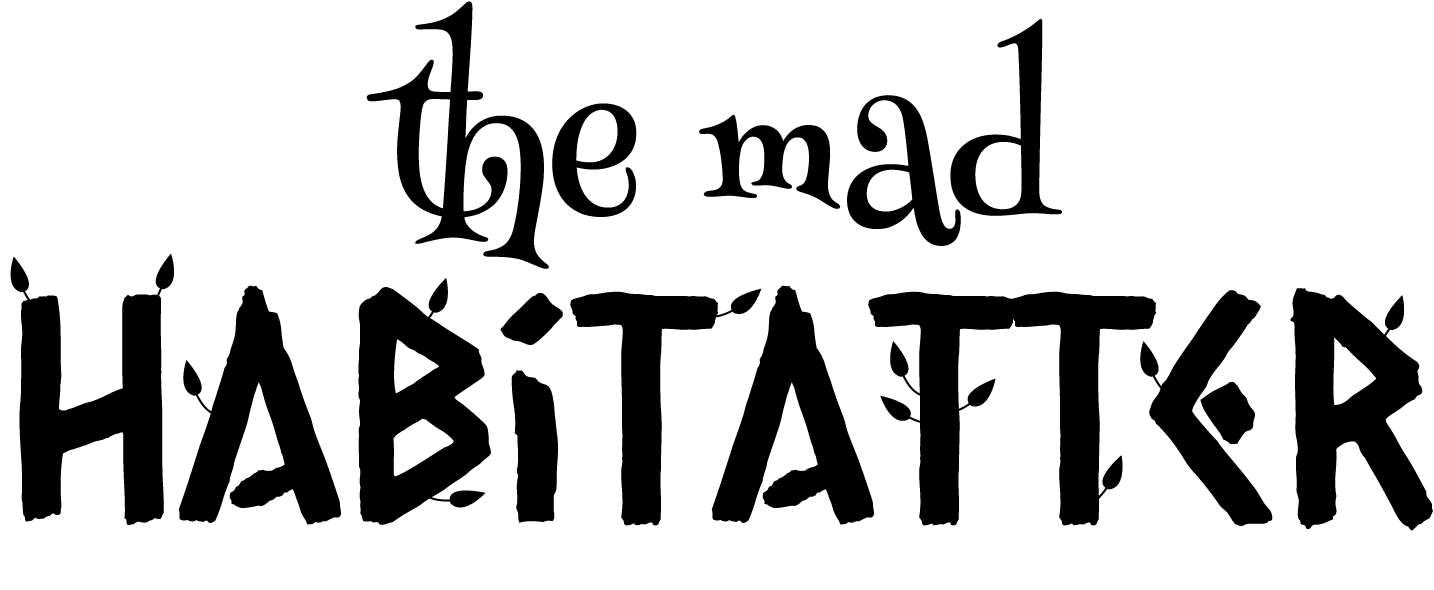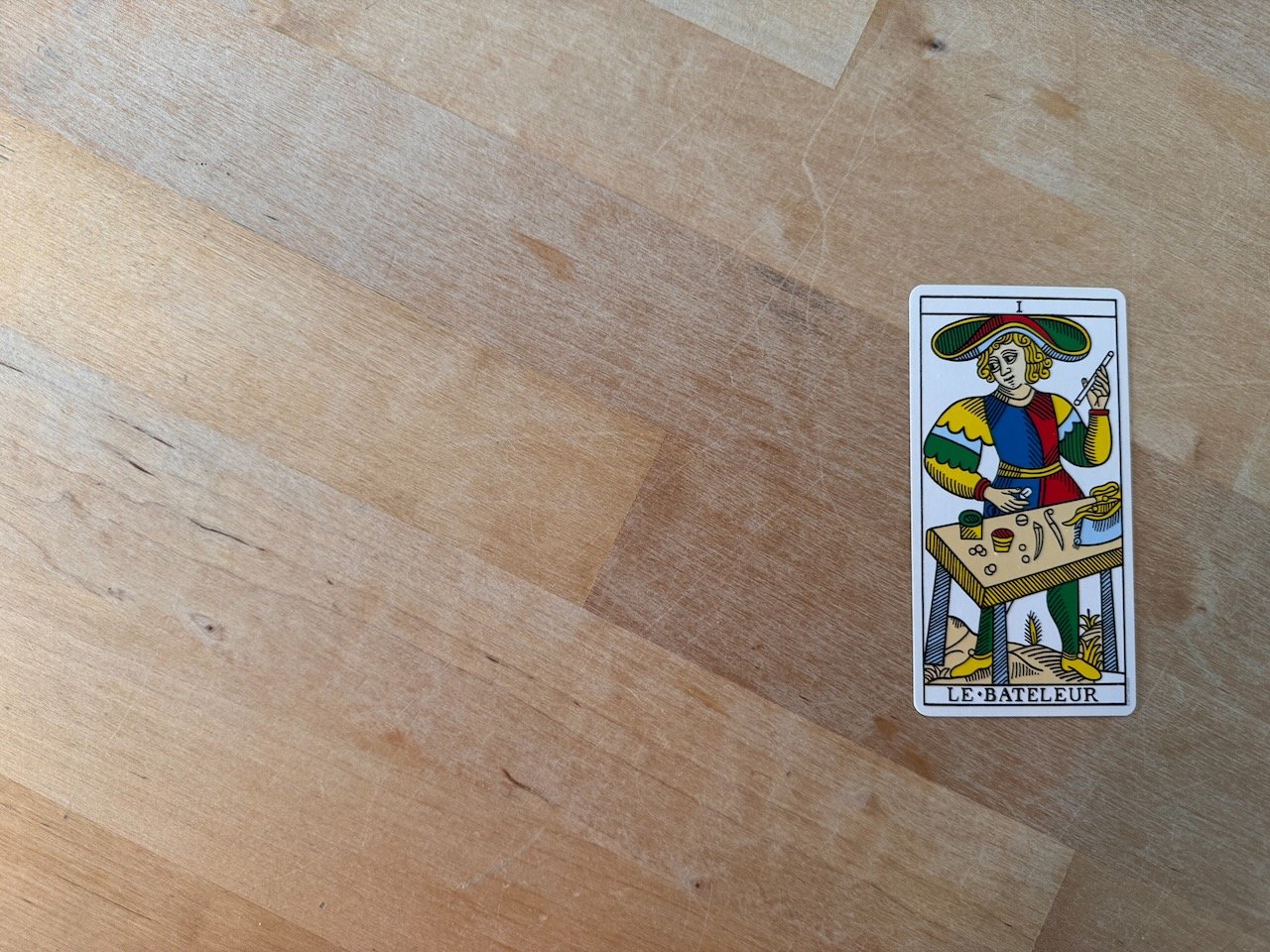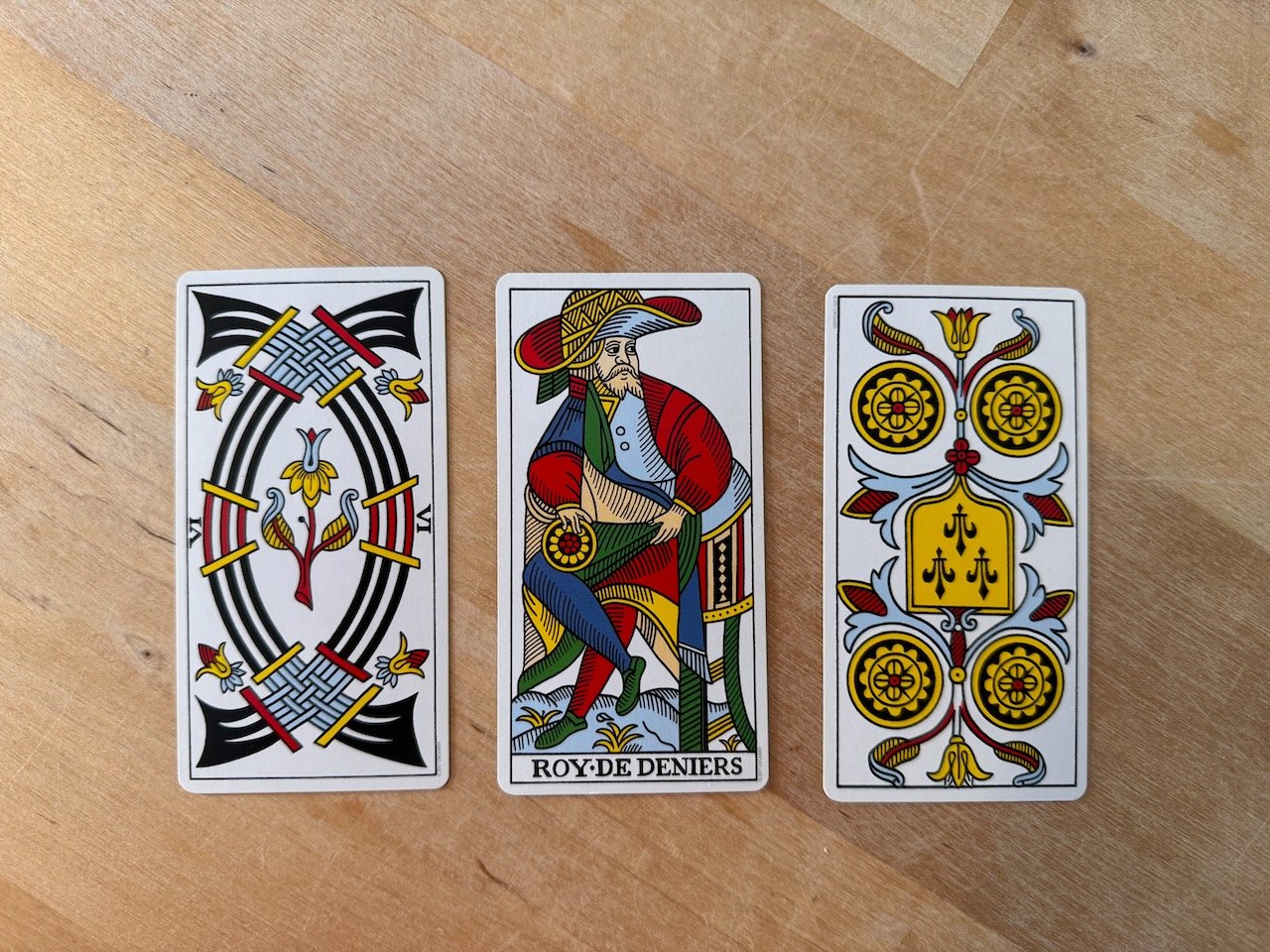Why You Should Try the Tarot de Marseille
Recently, my sister said she was thinking of picking up a Tarot deck, and she asked if I had any recommendations. A lot of people are trying Tarot for the first time or reconnecting with the cards after a few years off. And for good reason! Things are bananas right now.
If you’re looking for something to help you navigate how bonkers reality happens to be, I have one recommendation: the Tarot de Marseille. There is no other deck for me these days. I have become an absolute Tarot de Marseille zealot.
My Journey to the Tarot de Marseille
I’ve been reading Tarot since I was about 16. My first deck was a Rider Waite Smith, and I still love it dearly. It was my ride (ha)-or-die deck for two decades. I’ve dabbled in other decks over the years, too. One that comes to mind is Crowley’s Thoth deck, which I hate it with a passion. Its pretentiousness is next-level, even if some of the artwork is interesting.
When I committed to trying the Tarot de Marseille, I initially had flashbacks to the Thoth deck. At first, the Marseille seemed… undecipherable. Opaque. It may be challenging, but its flexibility and specific style can bring some incredible results once you learn its language. I still use some of my other decks occasionally for specific purposes (like dream interpretation), but the Tarot de Marseille has been my every-day deck for almost five years now.
So when my sister asked about recommendations, I was hoping to send her some links to pages that laid out a convincing argument for why someone should try the Tarot de Marseille. To my surprise, I couldn’t find any. Sure, there are good resources outlining its nearly-400-year history, and you can find some great collections of its artwork. But I couldn’t find a resource quickly enough that laid out why one should try the Tarot de Marseille and what sets it apart from other decks (granted, I didn’t search that hard).
Before I get into that, though, I want to point out that I am no expert on Tarot or this deck in particular. I do love it, and it is my main deck. However, there are others with much deeper knowledge than me. In fact, much of the information I have below is based on the work of Camelia Elias. She’s one of the most prominent figures in the Tarot de Marseille Renaissance. I came to her work through Rune Soup initially. Camelia offers books, courses, workshops, and readings on different aspects of Tarot. It’s her specific work with the Tarot de Marseille that makes me recommend her so highly. If you’re interested in learning more about the Tarot de Marseille, Camelia should be at the top of your list. And there will be plenty of reasons why you’ll want to learn more.
Why Read the Tarot de Marseille
In true Tarot de Marseille fashion, I will be blunt: this deck will intimidate you. When I first committed to learning it, I threw hissy fits pretty regularly early on. I remember unwrapping the deck, looking through the cards, and feeling completely overwhelmed. As a warning, this will probably happen to you, too. Don’t give into the despair!
Before my experience with the Tarot de Marseille, I was comfortable with the Rider Waite Smith’s depictions of each card’s individual meaning. I was used to having my hand held, at least a little, by the talented artistry of Pamela Coleman-Smith. “How am I supposed to read a bunch of flowers and lines?” I asked myself looking at a Batons Marseille card. “It makes no sense!” I learned very quickly that this deck has no intentions of being your friend.
The Tarot de Marseille has its own distinctive style in many ways, and it demands a completely new relationship to the cards when compared to other decks. No shade thrown at any of them or other styles of reading. But once I learned how to read with the Tarot de Marseille, I pretty much become a complete convert. It is direct, it is effective, and it means business. If you’re looking for a card stock companion who will tell you exactly what you need to hear, then you’re in the right place.
Less Nonsense, More Legit Fortune-Telling
Some decks tend to be pretty bombastic in their use of symbology both in the actual cards themselves and the spreads they recommend. They can be gentle and are good tools for personal development and other areas. Those are all great things, and certain situations may definitely call for those kinds of results. Simply put, most other decks are like well-meaning friends who never want to hurt your feelings.
The Marseille, meanwhile, is like someone who will look you up and down, give you the most devastating assessment of yourself possible, and then walk away leaving you questioning your life choices. Generally, you don’t come to the Marseille to make friends with it. You come to the Tarot de Marseille because you want to know some things.
The deck is for fortune telling through and through. It will aid you in making the best possible choices for determining a plan or taking action based on potential future outcomes. Other decks can do this, too, but the Marseille is exacting like no other.
A simple spread of pips
If you’re not familiar with the deck yet, I’d recommend checking out a few of its cards, particularly the pips (also known as the Minor Arcana). Conveniently, the Tarot de Marseille Wikipedia page has a great table that showcases each of the pips. If you haven’t seen the deck before, you might notice that it’s just…. a lot of similar symbols. The deck’s abstract flowers and lines are both a blessing and a curse. It’s a curse because, again, this deck can be extremely intimidating. Learning how to read the Tarot de Marseille is very much like learning a new language. At the same time, however, all of this abstraction leads to its inherent flexibility. Its free-flowing structure and abstract pips lead to an absurd amount of possibilities and creativity in interpreting the cards.
Flexibility, Creativity, and the Joy of Reading
With its figurative representations of cups, coins, batons, and swords, the pips of the Tarot de Marseille generally contain no completely fixed meanings. The deck is simple. Perhaps bafflingly so at times. On the flip side, it’s arguably free from all of the background noise and cultural baggage of some of the other decks. This helps the Tarot de Marseille to unshackle itself from the rigidity that can accompany other decks and styles of reading. You still can use some of those fixed meanings for each of the cards if you have them in your brain. But this deck will teach you that there are other ways to read, too.
When it comes to reading a Tarot de Marseille spread, you’re looking to see how the cards bleed into, connect with, or hold tension with each other. In many ways, the relationships between the cards are more important than the individual cards themselves. Ideally, you’re looking to build a sentence or a narrative with the cards in front of you. This allows for an absurd amount of flexibility and creativity when it comes to actually reading the cards.
Other decks and their corresponding spreads can lock you into uncompromising interpretations. While the Rider Waite Smith is great, it’s most often paired with the Celtic Cross spread. This combination can occasionally be brutally dense. It can require a whole bunch of mental gymnastics just to come to a potential interpretation of a specific card with its fixed meaning in the specific location with its fixed meaning within the spread. I often felt frustrated and confused with readings from other decks.
And this is possibly the best reason for trying the Tarot de Marseille: reading with it is way more fun. I’d even use the word “joyful.” Once everything clicks and your brain has become competent enough in its language, it is a downright joy to read this deck compared to others. It’s always a thrill when your mind clears and opens to what the cards are actually saying. There’s a shift, and suddenly you know. This happens in almost every reading for me.
A Different Language
I can safely say that learning the language of the Tarot de Marseille has been one of the best magicky things I’ve ever done for myself. However, developing a relationship with it will take patience. And practice. Lots and lots of practice. Oh, and maybe even some deprogramming!
In the Tarot de Marseille, the trumps (the Major Arcana in most other decks) and pips (the Minor Arcana) have an extremely collaborative relationship. Other decks tend to take more of a hierarchical approach: the Major Arcana are more “important” and carry far more weight. They are significant and heavy. Seeing more Major Arcana cards in a spread tends to mean you’re A Very Special Person who’s experiencing Very Special Things. In other decks, the Minor Arcana are there to add a bit of flavor and maybe some additional nuance, but they feel less special. Less spiritual. I used to have this bias myself.
In the Tarot de Marseille, however, the pips are the “every day” cards. And if you’re looking to tell a fortune, these every day cards are key. They’re the ones that give you a direct answer. They lay will out a potential future before you with a punch to the gut if necessary. In many ways, they’re the ones that also bring the flexibility that makes the deck so helpful.
A simple spread with a significator
Here’s a (very) quick overview of some ways to work primarily with the pips. Keep in mind that each of the tips below — like everything else with the Tarot de Marseille — is very context-dependent.
Learn the suits.
Cups = emotions, family, relationships, connections. Coins = money, wealth, value. Wands / batons = work, effort, learning, building. Swords = conflict, challenges, strife, severing.
Cups and Coins are red suits — they correspond to hearts and diamonds in a deck of playing cards — and they’re considered more positive. Cups are great and coins are good or good enough. Swords and Wands are black suits — think spades and clubs — and they’re generally negative. Swords are bad, and wands are bad enough.
Find direct relationships.
Ask yourself ‘how do these cards relate or tie into each other?” For example, check where the people might be looking if you have a spread with some court or trump cards. If you have a King of Coins eying a 4 of Coins in the next card, you can bet that that King is very much considering dropping the coin he’s holding in favor of pursuing whatever the 4 of Coins might represent. With that sly and envious look in his eye, who wouldn’t want to go from one measly coin to four?
Check for increases and decreases.
Let’s say you’ve got a question about your finances, and you throw three cards: 2 of Coins, 4 of Coins, 10 of Coins. Reading left to right, that’s a pretty dramatic increase in coins! To steadily go from a 2 to a 4 to a 10 would be fantastic news for your finances. Meanwhile, if you got a 9 of Coins, an 8 of Coins, and a 7 of Coins, the news is less great. It’s a decrease, but also a gradual one. Could be worse!
Find easy yes / no answers.
Three red cards are an emphatic yes. Two reds and a black is a “probably yes” while two blacks and a red is a “probably no.” And three blacks is usually “definitely no.”
Obviously, I barely scratched the surface here with the possibilities of the deck. But if you’re curious to learn more, I’d encourage you to try the Tarot de Marseille yourself. And while you’re at it, check out Camelia Elias’s approach. She can be intense at times, but her method is sound. Anyone interested in the Tarot de Marseille certainly owes her much admiration.



